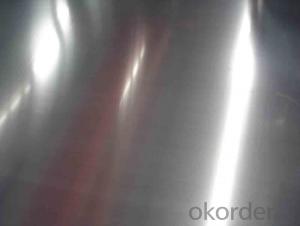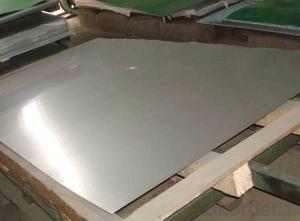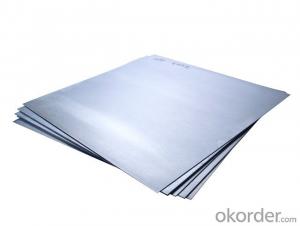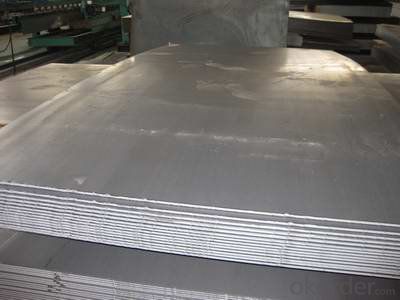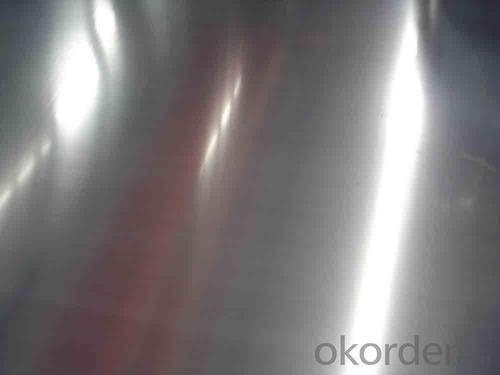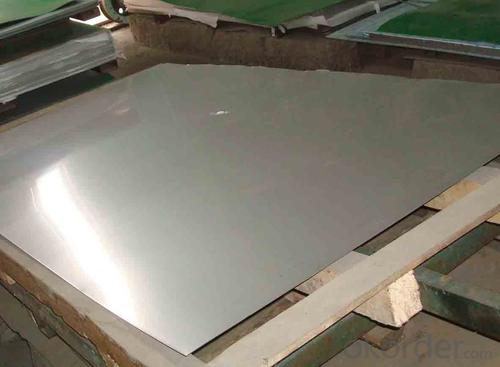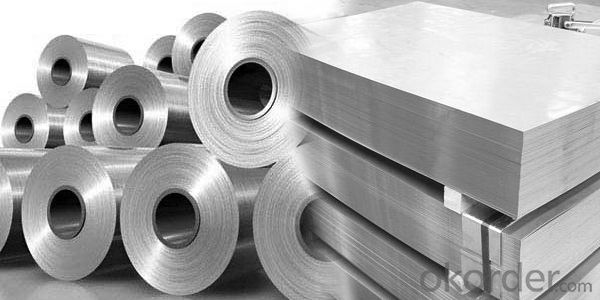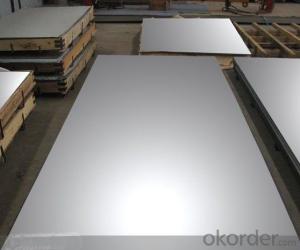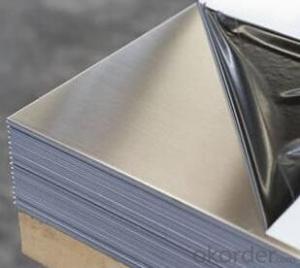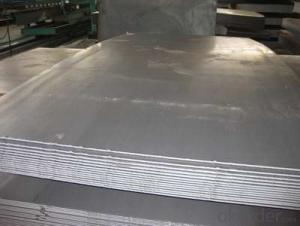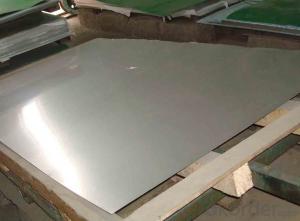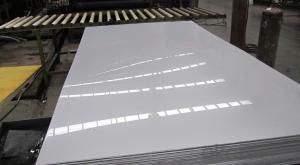Stainless Steel Sheet 304 with No.4 Surface Treatment
- Loading Port:
- Shanghai
- Payment Terms:
- TT OR LC
- Min Order Qty:
- 500 m.t.
- Supply Capability:
- 5000000 m.t./month
OKorder Service Pledge
OKorder Financial Service
You Might Also Like
Hot sale stainless steel sheet 201/202/304/304l/310S/309S/316L/316Ti/316/321/410/420/430/444/443/409L,and 904L.
Description of Stainless Steel Sheet:
Description | steel sheet,hot rolled steel sheet,cold rolled steel sheet, steel sheet,sheet,steel plate |
Standard | ASME, ASTM, EN ,BS,GB,DIN, JIS etc |
Application | Steel sheet applies to construction field, ships building industry, petroleum & chemical industries, war and electricity industries, food processing and medical industry, boiler heat exchanger, machinery and hardware fields. |
Packaging | Standard export sea-worthy packing |
Delivery time | 10-30 days |
Quality | No.1 |
Productivity | 500 tons/Day |
Note | Our company has cooperative relation between the domestic agents. Stainless steel sheet can be made accordingto the customers requirements. Fasten delivery. Quality assured. |
Contacts | If you have any question,please feel free contact me. |
Stainless steel sheet surface finish characteristics
Surface finish | Characteristics and application |
2B | The surface brightness and flatness of no2B is better than no2D. then through a special surface treatment to improve its mechanical properties,No2B could nearly satisfy comprehensive uses. |
No.1 | Polished with abrasive belt of grit#100-#200, have better brightness with discontinuous coarse stria, used as inner and external ornaments for building, electrical appliances and kitchen utensils etc. |
No.4 | Polished with abrasive belt of grit #150-#180,have better brightness with discontinuous coarse stria, but thinner than No3, are used as bathtub buildings inner and external ornaments electrical appliances kitchen utensils and food processing equipment etc. |
HL | Polished with abrasive belt of grit #150-#320 on the NO.4 finish and has continuous streaks, mainly used as buildings ornaments elevators, door of building, frontal plate etc. |
BA | Cold rolled, bright annealed and skin-passed, the product have excellent brightness and good reflexivity like mirror, kitchen apparatus, ornament etc. |
8K | The product have excellent brightness and prefer reflexivity can to be the mirror. |
Main Features of stainless steel sheet :
•Escalator, Elevator, Doors
•Furniture
•Production tools, Kitchen appliances, freezers, cold rooms
•Auto Parts
•Machinery and Packaging
•Equipment and Medical devices
•Transport system
Product Details:
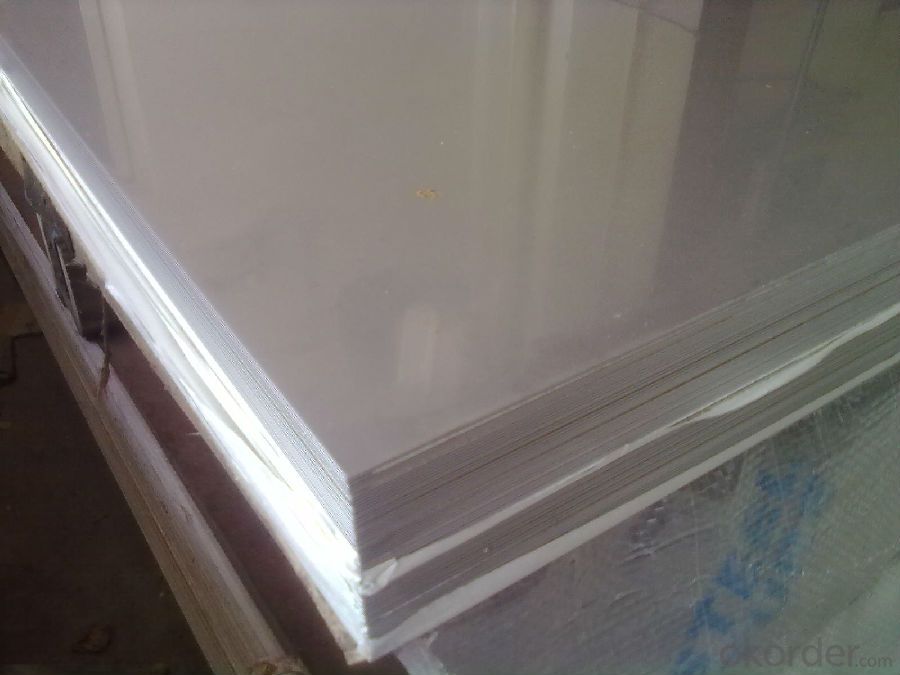

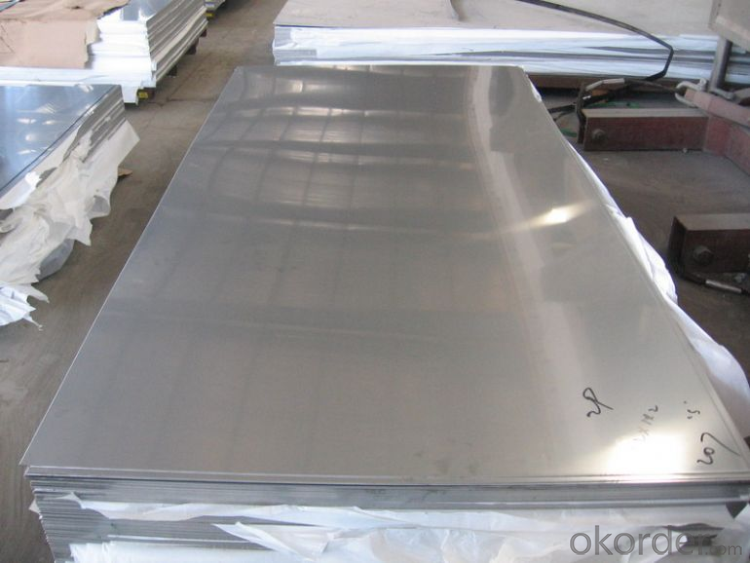



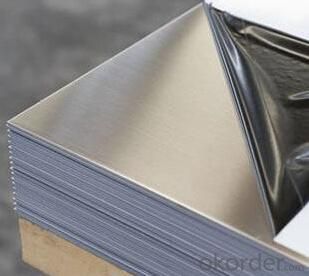
Cold Rolled and Hot Rolled:

Packing and Loading:
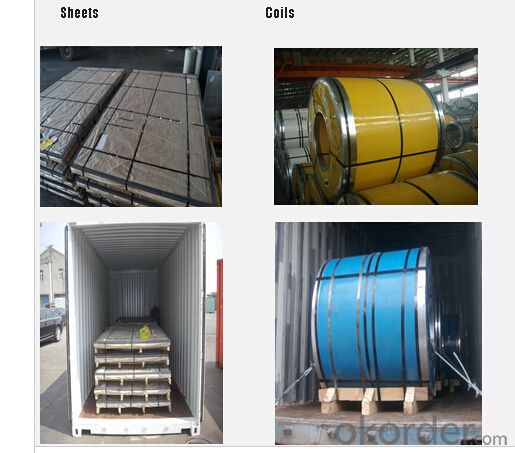
FAQ:
1. What's the quality?
Very fine, we have been exported to more than 30 countries.
2. How long get reply?
Usually within 24 hours
If you have any question about stainless steel sheets, do not forget to send the email to us! You will get the competitive Price and have a very good experience about the Buying Process! CNBM International Corporation is always your trustful friend!
- Q: Are stainless steel sheets suitable for food processing?
- Yes, stainless steel sheets are highly suitable for food processing. Stainless steel is widely used in the food and beverage industry due to its excellent properties and hygienic nature. It is non-reactive, corrosion-resistant, and does not impart any flavor or odor to the food being processed. Stainless steel is easy to clean and maintain, making it an ideal choice for food processing equipment, countertops, and other surfaces. It also withstands high temperatures and is resistant to bacterial growth, making it a safe and reliable material for food processing.
- Q: Are stainless steel sheets suitable for water storage tanks?
- Indeed, water storage tanks can be constructed using stainless steel sheets. Stainless steel possesses a remarkable resistance to corrosion, rendering it an optimal selection for water preservation. Its durability and longevity eliminate the need for frequent upkeep. Moreover, the smooth and non-porous surface of stainless steel sheets inhibits bacterial proliferation, thereby guaranteeing the cleanliness and safety of the stored water for consumption. Furthermore, stainless steel exhibits resistance against UV rays, extreme temperatures, and chemicals, affirming its dependability as a material for water storage tanks.
- Q: Can stainless steel sheets be customized in terms of size and shape?
- Yes, stainless steel sheets can be customized in terms of both size and shape. They can be cut, bent, or shaped according to specific requirements, allowing for a wide range of customization options.
- Q: How do I prevent galling on stainless steel sheets?
- To prevent galling on stainless steel sheets, there are several steps you can take: 1. Lubrication: Apply a suitable lubricant to the stainless steel sheets, especially in areas where they come into contact with other surfaces or materials. Lubrication reduces friction and helps prevent galling. 2. Avoid using similar metals: When stainless steel sheets come into contact with other stainless steel surfaces, galling can occur due to the transfer of metal particles. To prevent this, try to use dissimilar metals or non-metallic materials that are compatible with stainless steel. 3. Surface finish: Ensure that the stainless steel sheets have a smooth surface finish. Rough surfaces can increase friction and the likelihood of galling. Consider using polishing or grinding techniques to achieve a smoother surface. 4. Control contact pressure: Excessive pressure between stainless steel sheets can lead to galling. Try to minimize contact pressure by adjusting clamping forces or using gaskets, washers, or other materials that distribute the load evenly. 5. Slow down the sliding speed: High sliding speeds can contribute to galling. Slowing down the movement or using anti-galling coatings can reduce the risk of galling on stainless steel sheets. 6. Regular maintenance: Inspect the stainless steel sheets regularly for signs of wear or damage. Address any issues promptly to prevent further damage that could lead to galling. By following these preventive measures, you can significantly reduce the occurrence of galling on stainless steel sheets, ensuring their longevity and optimal performance.
- Q: Are stainless steel sheets suitable for electrical applications?
- Stainless steel sheets, indeed, prove to be a fitting choice for electrical applications. Their exceptional electrical conductivity and resistance to corrosion have made them highly favored for electrical components and equipment. They find extensive use in the fabrication of electrical enclosures, connectors, and terminals. Moreover, stainless steel sheets possess remarkable durability and longevity in electrical applications due to their ability to endure high temperatures and exhibit commendable mechanical properties.
- Q: How long do stainless steel sheets last?
- Stainless steel sheets have an exceptionally long lifespan and can last for several decades or even a lifetime with proper care and maintenance.
- Q: Are stainless steel sheets suitable for architectural facades?
- Yes, stainless steel sheets are highly suitable for architectural facades. Stainless steel is a versatile and durable material that offers several advantages when used in architectural applications. One of the main reasons stainless steel sheets are suitable for facades is their aesthetic appeal. Stainless steel has a sleek and modern look that can enhance the overall appearance of a building. It can be finished in various ways, such as brushed, mirrored, or patterned, allowing architects to achieve the desired design aesthetic. In addition to its visual appeal, stainless steel is also highly resistant to corrosion. This makes it ideal for outdoor applications, as it can withstand exposure to harsh weather conditions, pollution, and other environmental factors without deteriorating. Stainless steel's corrosion resistance also means that it requires minimal maintenance, reducing long-term costs and efforts associated with facade upkeep. Another advantage of stainless steel sheets for architectural facades is their strength and durability. Stainless steel is a strong material that can withstand impact, making it suitable for high-traffic areas or buildings located in areas prone to severe weather events. It is also resistant to staining, scratching, and fading, ensuring that the facade remains attractive and intact for an extended period. Additionally, stainless steel is a sustainable material choice for architectural facades. It is 100% recyclable and can be reused without losing its properties, making it an environmentally friendly option. Stainless steel's longevity also contributes to sustainability, as it reduces the need for frequent replacements over time. Overall, stainless steel sheets are a highly suitable choice for architectural facades due to their aesthetic appeal, corrosion resistance, strength, durability, and sustainability. Whether used in modern or traditional designs, stainless steel can provide a long-lasting and visually pleasing solution for enhancing the exterior of buildings.
- Q: Can stainless steel sheets be used for elevator ceilings or floors?
- Yes, stainless steel sheets can be used for elevator ceilings or floors. Stainless steel is a highly durable and versatile material that is commonly used in various architectural applications, including elevator interiors. It offers numerous benefits such as corrosion resistance, easy maintenance, and a sleek and modern appearance. Stainless steel sheets can be customized to fit the specific dimensions and design requirements of elevator ceilings or floors, providing a stylish and functional solution. Additionally, stainless steel is compatible with various elevator accessories like lighting fixtures, handrails, and buttons, allowing for seamless integration into the overall elevator design.
- Q: What are the different types of stainless steel sheet embossing patterns available?
- There are various types of stainless steel sheet embossing patterns available, including diamond, linen, quilted, hammered, and checker plate.
- Q: Can stainless steel sheets be used for architectural canopies?
- Yes, stainless steel sheets can be used for architectural canopies. Stainless steel is a versatile material that offers several benefits in architectural applications, including canopies. Firstly, stainless steel is highly durable and resistant to corrosion, making it suitable for outdoor installations. This ensures that the canopy will withstand harsh weather conditions and maintain its appearance over time. Additionally, stainless steel has a sleek and modern aesthetic that can enhance the overall design of the canopy. It can be polished to a mirror-like finish or brushed to create a unique texture, providing architects with various options to achieve their desired look. Stainless steel sheets are also available in different thicknesses, allowing for customization based on the specific requirements of the canopy. This flexibility ensures that the material can support the weight of the structure and any additional elements, such as lighting or signage. Moreover, stainless steel is a sustainable choice for architectural canopies as it is fully recyclable. This aligns with the growing demand for environmentally-friendly construction materials and practices. In summary, stainless steel sheets are a suitable and popular choice for architectural canopies due to their durability, aesthetic appeal, flexibility, and sustainability.
Send your message to us
Stainless Steel Sheet 304 with No.4 Surface Treatment
- Loading Port:
- Shanghai
- Payment Terms:
- TT OR LC
- Min Order Qty:
- 500 m.t.
- Supply Capability:
- 5000000 m.t./month
OKorder Service Pledge
OKorder Financial Service
Similar products
Hot products
Hot Searches
Related keywords

